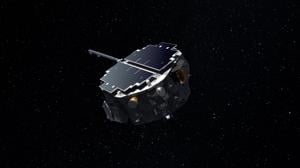Science
NASA Launches Resupply Mission to Boost Cancer, Semiconductor Research
NASA has initiated a resupply mission aimed at advancing critical research in cancer treatments and semiconductor technologies. The mission, which launched on October 3, 2023, aboard a SpaceX cargo spacecraft, is set to deliver vital equipment and scientific experiments to the International Space Station (ISS).
NASA is collaborating with multiple research institutions to explore the effects of microgravity on cancer cells and the development of advanced semiconductor materials. This initiative could lead to breakthroughs in therapies for cancer patients and innovations in electronics, which are increasingly essential in our technology-driven world.
Research Objectives and Expected Outcomes
The primary focus of this resupply mission is two-fold: conducting cancer research and enhancing semiconductor manufacturing processes. Researchers are particularly interested in how the unique environment of the ISS affects cell growth and behavior. Studies suggest that microgravity can alter cellular responses, potentially revealing new targets for cancer therapies.
Moreover, the mission seeks to investigate how semiconductor materials respond to space conditions. This research could pave the way for more efficient electronic components, which are critical for everything from mobile devices to renewable energy technologies.
The ISS will serve as a laboratory for these experiments, allowing scientists to observe their hypotheses in a controlled environment. The findings from this mission may provide insights that can be translated into practical applications on Earth.
Collaboration and Future Implications
NASA’s efforts are bolstered by partnerships with universities and private sector companies focused on biotechnology and material science. By leveraging the unique capabilities of the ISS, these collaborations aim to accelerate the pace of innovation.
According to Dr. Mark V. Sykes, a leading researcher in cancer biology, “The microgravity environment provides an unparalleled opportunity to study the complexities of cancer cells in ways that are simply not possible on Earth.” Such insights could lead to novel treatment strategies that improve patient outcomes.
As the mission progresses, NASA will continue to share updates on the research findings and their implications for both medical and technological advancements. The results could transform our understanding of cancer and lead to significant improvements in semiconductor technologies, reinforcing the importance of continued investment in space research.
This mission marks another step forward for NASA and its commitment to addressing global challenges through innovative science and technology. The outcomes of this research may not only benefit health and technology sectors but also enhance the overall quality of life on Earth.
-

 Technology5 months ago
Technology5 months agoDiscover the Top 10 Calorie Counting Apps of 2025
-

 Health2 months ago
Health2 months agoBella Hadid Shares Health Update After Treatment for Lyme Disease
-

 Health3 months ago
Health3 months agoErin Bates Shares Recovery Update Following Sepsis Complications
-

 Technology4 months ago
Technology4 months agoDiscover How to Reverse Image Search Using ChatGPT Effortlessly
-

 Technology1 month ago
Technology1 month agoDiscover 2025’s Top GPUs for Exceptional 4K Gaming Performance
-

 Technology2 months ago
Technology2 months agoElectric Moto Influencer Surronster Arrested in Tijuana
-

 Technology5 months ago
Technology5 months agoMeta Initiates $60B AI Data Center Expansion, Starting in Ohio
-

 Technology5 months ago
Technology5 months agoRecovering a Suspended TikTok Account: A Step-by-Step Guide
-

 Health4 months ago
Health4 months agoTested: Rab Firewall Mountain Jacket Survives Harsh Conditions
-

 Lifestyle5 months ago
Lifestyle5 months agoBelton Family Reunites After Daughter Survives Hill Country Floods
-

 Technology4 months ago
Technology4 months agoHarmonic Launches AI Chatbot App to Transform Mathematical Reasoning
-

 Technology3 months ago
Technology3 months agoUncovering the Top Five Most Challenging Motorcycles to Ride





















